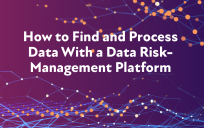Having worked in Texas state government for more than 15 years, Chief Data Officer Neil Cooke understands firsthand the difference that data can make.
Cooke began working for Texas in 2007, when he took a job at the Department of Agriculture, first as a systems analyst and later as a management analyst and project manager. During his seven years there, he and his team looked at how to use data to measure various programs’ performance.
In the process, they began to apply data management principles, although that term was not yet in vogue. “We were asking questions around the completeness and accuracy of the data, and about getting it where we needed it and when we needed it,” Cooke said.
The effort paid off. For one program, they increased service delivery by 20% — and without affecting the quality of service or the size of the staff.
He did similar work on a larger scale when he was Director of Performance Management at the Texas Health and Human Services Commission, helping to design an enterprisewide performance management system supporting hundreds of programs.
Now, Cooke, who was appointed Chief Data Officer (CDO) in December 2022 after two-plus years as a data officer, focuses on helping other state employees learn how to bring data to bear on their work.
“The goal is to instill that data-focused philosophy throughout the organization, so that it’s not limited to the data team or IT department,” he said.
The Building Blocks of Data Literacy
In January 2022, Texas put together an interagency working group to develop an approach to improving the state workforce’s data literacy. The learning path for data scientists is well understood, but what does it look like for people who want to be savvy consumers of data?
“A data-savvy workforce understands how to collect and analyze data but also understands its significance,” Cooke said. “They use data to inform their decisions, develop strategic plans and measurably contribute to the success of the organization.”
One key concern is data lineage: Where did the data come from? And how complete, accurate and timely is it? “Accurate and timely decisions depend on employees knowing how to read, understand, work with and communicate with data,” Cooke said.
The working group identified six core competencies of data literacy:
- Understand: What is data and its impact?
- Find/obtain: Where can I find the data I need?
- Read: How do I interpret it and what should I know?
- Manage: What are the principles of data management?
- Using: How is data prepared and how do I analyze it?
- Communicate: How do I talk about data with others?
But before they could begin building a data literacy program, the group needed to establish a baseline. So, they asked its members, who represented more than 20 agencies, to assess their respective teams’ data literacy levels.
The working group then conducted a gap analysis, looking at the current state of data literacy and where the group wanted to be. With that analysis in hand, it put together a plan to close that gap, Cooke said.
A Three-Pronged Approach
The first step was creation of the Texas Data Literacy Program. It was designed to give employees across state government and higher education the chance to improve their data competency through a series of courses that cover a range of data-related topics.
The program starts with 10 foundational courses applicable to everyone. They cover topics such as:
- Introduction to data literacy
- History of data management and the Office of the CDO
- Data governance and the data life cycle
- Data quality
- Data privacy and ethics
- Data security
- Data sharing
- Roles and responsibilities
- Storytelling with data
- Records management
Cooke said the state envisions a three-pronged approach to offering the training.
Central learning management system. The courses are hosted on a learning management platform. Employees of a state agency or institution of higher education can request access through the Texas Data Literacy Program site.
YouTube. Some courses also are available through the Texas Department of Information Resources’ YouTube channel. “We believe it is important to reach a larger audience of data users who might not necessarily be interested in earning certificates of completion,” Cooke said.
Individual agency programs. In the future, they also might allow individual agencies to host courses on their own learning platforms, so they can administer the training to their staff in a way that works for them.
A Work in Progress
Several of the initial foundational courses already are available, with others in development. Once the foundational courses are complete, the program will produce courses that offer more advanced training on some of those topics, Cooke said.
But this is just the beginning. The program is expected to remain a work in progress, always adapting to the community’s requirements.
“To that end, we plan on sending annual assessments to the Texas data community to make sure that we’re staying abreast of the community’s evolving needs and their priorities,” Cooke said.
Data captured from the pilot phase, which included participants from 28 agencies and institutions of higher education, indicate that the program will be a success.
“The high completion rate and positive reviews from everybody are compelling proof that it’s effectively promoting data competency and providing immense value to the learners,” Cooke said.
“By equipping participants with these essential data skills, the program’s helping to empower them to make more informed decisions, improve work efficiency and enhance their overall professional development,” he said.
This article appears in our guide, “Decision Intelligence: New Possibilities for Data-Based Decision-Making.” For more about how agencies are using data in practical ways, download it here:





Leave a Reply
You must be logged in to post a comment.